The mobile market moves fast, and the desire to create a new game as soon as the previous one begins to slow runs high. However, as player expectations change and they demand a richer gaming experience, it can be beneficial to adapt a current game, giving it more depth and refreshing it for the audience rather than moving to create something entirely new.
In this guest post, Azur Games producer Milana Gelmanova takes us through the transformative journey behind Ural Games' Taxi Run. Gelmanova shares why the team chose to adapt a pre-existing game rather than develop something new and how Taxi Run’s evolution ultimately led to a 30% increase in revenue.

More than four years have elapsed since the launch of Taxi Run, which underwent many impactful updates last year, leading to a 30% surge in revenue. Previously, it was a common belief that hypercasual games would not benefit from prolonged support post-release.
In the past, developers focused on rapidly releasing projects, reaping initial profits, and swiftly moving on to the next venture. This approach initially proved successful. However, as competition intensified and player expectations rose, launching multiple projects often yielded little impact. Such games either drowned in a sea of similar titles or were quickly abandoned by players in favour of more engaging, content-rich games.
If a project is already stable with solid metrics and an established audience, why not further its development?
Consequently, our strategy shifted towards enhancing already successful games and focusing on the development of intricate, enduring casual and midcore games. Today, I will discuss how Taxi Run - developed by our in-house studio, Ural Games - exemplifies a hypercasual game that has evolved significantly over time, incorporating new mechanics and sustaining player interest.
Additionally, we experimented with integrating in-game ads as a bonus feature and will share insights from this initiative.
Why pick an old game?
With the escalating challenge of breaking into the top ranks of gaming apps, developing a polished project with a nice look and feel now demands substantially more time and resources. Success, however, remains uncertain.
Conversely, if a project is already stable with solid metrics and an established audience, why not further its development?
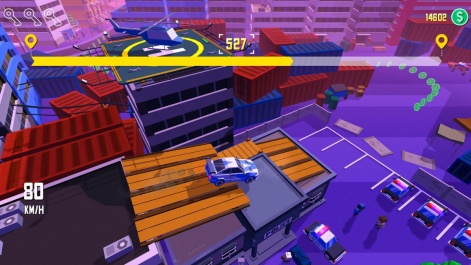
Why not inject new mechanics and content to draw in new players, re-engage former ones, and prolong the game’s lifecycle? This approach is generally less risky and resource-intensive than attempting to develop the next blockbuster hit. Furthermore, a collection of successful projects can cumulatively match the returns of a single hit game. For instance, one studio we partnered with focused on the puzzle genre and launched six titles that collectively generated over $14 million in revenue.
Returning to Taxi Run, this game was initially at risk of being discontinued after its release, with an R1 of only 20% - a metric typically signalling little merit in continued investment. However, we saw potential in the project and the team and opted to test various hypotheses by radically redesigning the level dynamics. This effort boosted the R1 to 40%, leading to stable profitability - a topic we previously discussed two years ago.
Yet, Taxi Run continues to evolve, steering towards becoming a hybrid model with even more ambitious plans for the future.
Now, let’s see what changed since our last article.
New mechanics
We found it peculiar that a game about swift city navigation lacked actual racing elements. This gap inspired a new feature that significantly enhanced the game over the past year.
Now, in certain levels, when the player commits a traffic violation, a patrol car initiates a chase. This addition has enriched the game dynamics tremendously, as any halt results in failing the level.
This also addressed the game's progression issue, which previously felt too repetitive, and the hypercasual genre's constraints prevented the development of lengthy, intricate levels. Typically, a game session in Taxi Run lasts only 15-20 seconds, but incorporating racing within levels introduced variety and a fresh experience.
However, perfecting this mechanic required several iterations.
Firstly, while players enjoyed the challenge, they disliked losing. Thus, police chases are not featured in all levels, and where they do occur, the level design was carefully adjusted to avoid simultaneous navigation around numerous cars and escaping police.
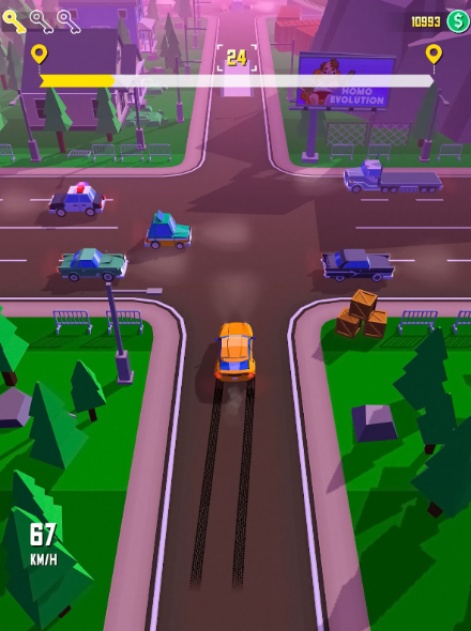
Secondly, players initially struggled to understand the connection between their actions and the onset of a chase. Originally triggered by traffic violations like running a red light, we attempted to make traffic lights more prominent, but the game’s fast pace and vibrant graphics clashed with this element.
Now, chases are triggered by specific actions at designated locations. For example, when the player hits a barrier at a police checkpoint, the siren activates, prompting the police car to start the pursuit.
Here's a refined version of the segment:
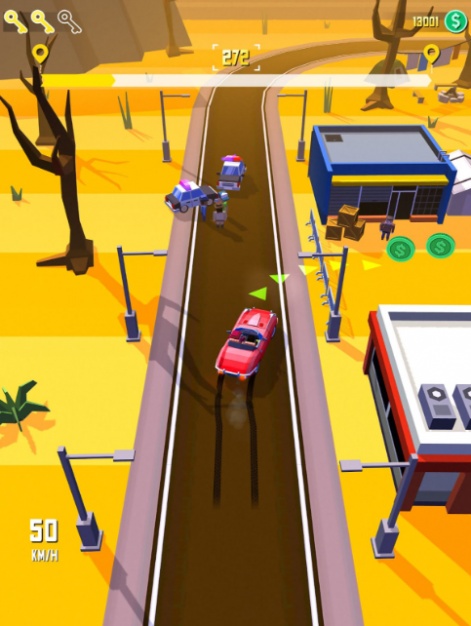
We also finely tuned the chase dynamics, adjusting police speed, approach timing, and the overall pacing to maintain a sense of imminent loss while not overly taxing the player’s skills, which is crucial in hypercasual games.
Following a rocky start four years ago, focused improvements in level design significantly boosted retention
Metrics following last year's updates (with the chase mechanic making the most significant impact):
- Revenue increased by 30%
- Spend rose by nearly 20%
As for retention and playtime, they generally remain the same but at higher volumes:
- R1 at 40%
- Playtime at 10 minutes
Evolving level design and expanding content
Following a rocky start four years ago, focused improvements in level design significantly boosted retention. We've continually refined our levels to maximise diversity. Initially, our modular approach to level construction seemed promising, yet players quickly recognized repeated patterns, such as identical turns, even after several levels.
Our solution was to introduce a wider array of assets, biomes, and environmental elements to ensure long-lasting diversity by varying the objects encountered.
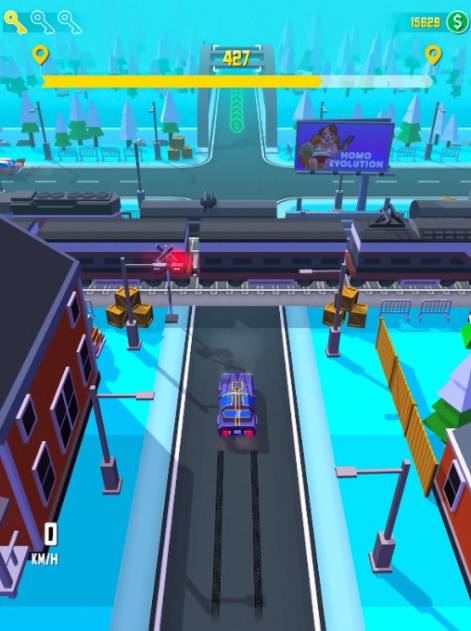
Additionally, we introduced dynamic camera movements and unexpected directional changes. There are moments now when a car might veer off the assumed path, heading in a completely unexpected direction.
Some turns are designed at abrupt 90-degree angles, and the upcoming path isn't visible to the player. These areas are free of obstacles, but the element of surprise they introduce significantly enhances the game's dynamism, which is a crucial component in racing games.
Another major focus has been on car models, which have consistently been a strong engagement factor in the game. Interestingly, players are often drawn more to the cars' aesthetics and pop culture references than to their technical specs. We've added dozens of culturally recognizable models, such as a skibidi toilet reference during its peak popularity - these references invariably resonate well with our audience.
We also introduced new types of vehicles, like aeroplanes. While these don't alter the control mechanics, their unique visual proportions offer a fresh gameplay experience, especially when navigating roads and executing jumps from ramps or rooftops.
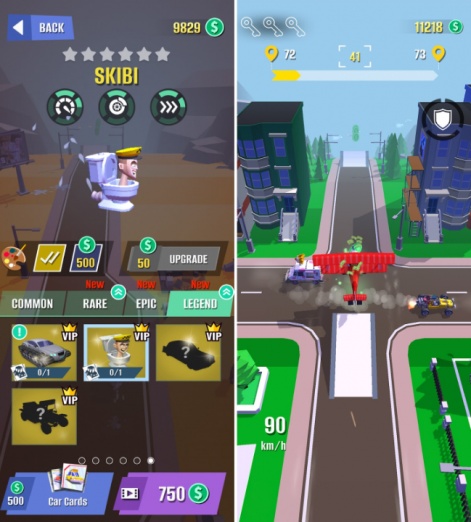
Bonus: Exploring in-game ads
In-game advertising is a significant area we've been exploring across multiple projects. The results merit a detailed discussion, but here's a brief overview concerning Taxi Run:
We incrementally integrated advertising by initially incorporating a few billboards within the game. As cars progress through levels, they pass these billboards, which display ads.
Initial tests were approached with caution, yet the outcome was positively surprising:
- A 5% increase in overall revenue without adversely impacting other metrics
In the U.S. market specifically, the number is even higher. The revenue from in-game ads has surpassed some traditional mediation networks. This billboard strategy offers a subtle form of product placement that doesn't disrupt gameplay.
We're currently developing a new iteration of this advertising approach, details of which I'll share in a future update.
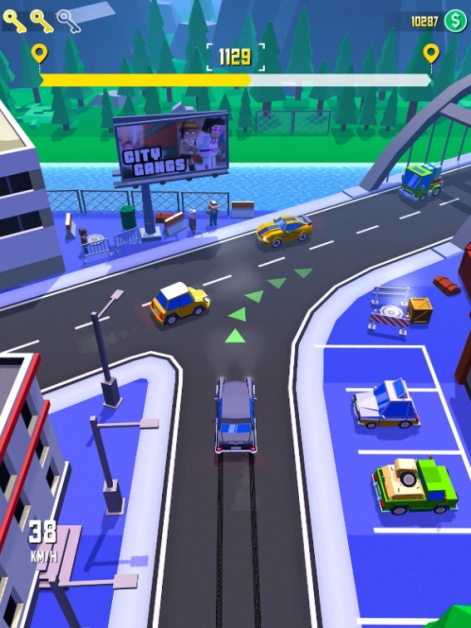
Collectively, these efforts have boosted spend by nearly 20% and revenue by 30%, three years post-launch
From hypercasual to hybrid
With Taxi Run, our approach has always been to progress steadily, yet consistently. Collectively, these efforts have boosted spend by nearly 20% and revenue by 30%, three years post-launch. There's no magic formula here - just dedicated, methodical work.
Looking ahead, we've charted out a detailed roadmap for at least another year, though we anticipate the project will thrive for much longer despite the volatile market conditions.
Hypercasual games can sustain profitability over the years, but they need to evolve continuously. Like many of our ventures, Taxi Run is gradually transitioning towards a hybrid model. This evolution is a key focus for the upcoming year.
We're considering a comprehensive overhaul of the gameplay experience, which may include altering the control scheme, enhancing content progression, and placing greater emphasis on vehicle customization and the garage. Additionally, we aim to introduce a cohesive meta layer that ties all these elements together. An endless mode is also under development.
This dynamic approach to the project prevents team burnout and keeps everyone engaged. It fosters a sense of achievement and continuous learning as we explore new mechanics and expand our creative boundaries. There's a vast development plan in place, and the team is excited about the possibilities ahead.
With market trends leaning towards stagnation, our strategy has shifted. Rather than chasing the next big hit, we're focusing on the long-term enhancement of our existing hypercasual titles. This is our immediate plan. Moving forward, we'll also be diving deeper into the casual and midcore sectors.
Edited by Paige Cook






















